In The News
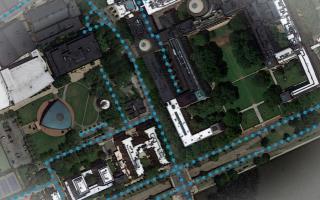
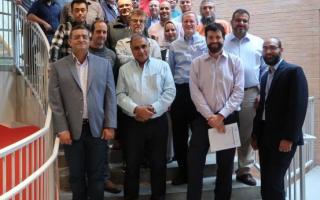
Research teams shared information on progress across six research projects.
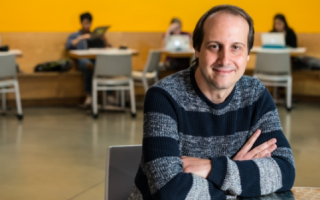
Read more at HBKU News

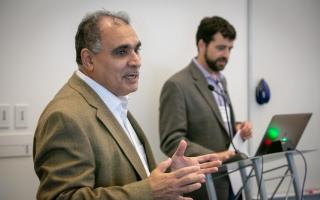
The meeting focused on recent work and future areas of exploration between the two institutions, who have now been conducting computer science research together for six years.
Full story at CSAIL News: https://www.csail.mit.edu/news/csail-hosts-annual-meeting-highlighting-c...

Social media companies have also had mixed results limiting the spread of propaganda and misinformation. Facebook plans to have 20,000 human moderators by the end of the year, and is putting significant resources into developing its own fake-news-detecting algorithms.
Researchers from MIT’s Computer Science and Artificial Intelligence Lab (CSAIL) and the Qatar Computing Research Institute (QCRI) believe that the best approach is to focus not only on individual claims, but on the news sources themselves. Using this tack, they’ve demonstrated a new system that uses machine learning to determine if a source is accurate or politically biased.
Full story at MIT News: http://news.mit.edu/2018/mit-csail-machine-learning-system-detects-fake-...
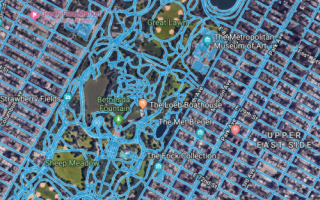
Gaps in maps are a problem, particularly for systems being developed for self-driving cars. To address the issue, researchers from MIT’s Computer Science and Artificial Intelligence Laboratory (CSAIL) have created RoadTracer, an automated method to build road maps that’s 45 percent more accurate than existing approaches.
Full story at MIT News: http://news.mit.edu/2018/new-way-to-automatically-build-road-maps-with-a...

Taking place the week of March 26, the meeting focuses on recent work and future areas of exploration between the two institutions, who have been conducting computer science research together for more than five years.
https://www.csail.mit.edu/news/csail-researchers-visit-doha-annual-qcri-...

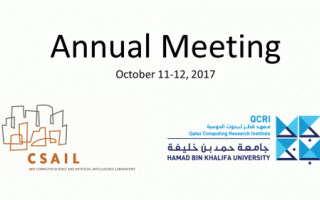
Scientists from both organizations are undertaking a variety of core computer science research projects – Database Management; Arabic Speech and Language Processing for Cross-Language Information Search and Fact Verification; Next Generation Video; Understanding Health Habits from Social Media; A Vertically-Integrated Approach to Resource-Efficient Shared Computing; Understanding and Developing for Cultural Identities Across Platforms; and Accurate Map Making Using Mobile Sensor Data.
They will be presenting their latest updates on this research at the project review.
For an agenda, please click here. The meeting is private and by invitation only.
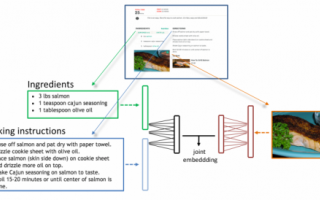

Professor Winston’s public talk, “The Future of AI: Where we are, how we got there and where we are going”, will be held on Monday, March 27 at the Qatar National Convention Centre.
It is the highlight of an annual meeting in Qatar between MIT CSAIL and Hamad bin Khalifa University’s Qatar Computing Research Institute (QCRI).
Professor Winston’s research group at CSAIL studies how humans’ story-understanding faculty separates us from other species. A story-understanding system developed by his group reads simple stories, answers questions about them, asks intelligent questions, identifies concepts, retells persuasively, educates, summaries, compares and authors.
His research integrates work from several allied fields, including AI, computer science, neuroscience, cognitive science, linguistics and paleoanthropology. Professor Winston’s early work was supervised by the late Marvin Minsky, a computing pioneer regarded as the “father of artificial intelligence”.
Dr Ahmed Elmagarmid, Executive Director of QCRI, described Professor Winston as “one of the finest experts in artificial intelligence,” and urged Qatar residents to hear him speak.
“This is a critical time in the development of AI, which has seen a resurgence as advanced AI techniques like deep neural networks, big data and powerful computing hardware are poised to transform society in a way not seen since the industrial revolution,” Dr Elmagarmid said.
“Professor Winston has been witness to the evolution of AI, having led MIT's AI Lab from 1992 to 1997 and is an author of several books on AI, computer vision, and computer programming."
To attend this event, please RSVP.
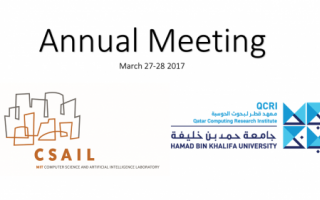
The annual meeting is a highlight of a collaboration between QCRI and MIT CSAIL, a medium for knowledge creation, transfer and the exchange of expertise between scientists.
Scientists from both organizations are undertaking a variety of core computer science research projects – Database Management; Arabic Speech and Language Processing for Cross-Language Information Search and Fact Verification; Content-Adaptive Video Retargeting; Understanding Health Habits from Social Media; A Vertically-Integrated Approach to Resource-Efficient Shared Computing; Understanding and Developing for Cultural Identities Across Platforms; and Urban Data Analytics to Improve Mobility for Growing Cities in the Context of Mega Events.
They will be presenting their latest updates on this research at the project review.
The meeting will be followed by a public talk by MIT CSAIL’s Professor Patrick Winston: “The Future of AI: Where we are, how we got here and where we are going,” at the Qatar National Convention Centre, Auditorium 1 at 4pm.
For an agenda, please click here.
To attend this event, please RSVP.

That turns out to be a shockingly time-consuming task. In a 2016 survey, 80 data scientists told the company CrowdFlower that, on average, they spent 80 percent of their time collecting and organizing data and only 20 percent analyzing it.
An international team of computer scientists hopes to change that, with a new system called Data Civilizer, which automatically finds connections among many different data tables and allows users to perform database-style queries across all of them. The results of the queries can then be saved as new, orderly data sets that may draw information from dozens or even thousands of different tables.
“Modern organizations have many thousands of data sets spread across files, spreadsheets, databases, data lakes, and other software systems,” says Sam Madden, an MIT professor of electrical engineering and computer science and faculty director of MIT’s bigdata@CSAIL initiative. “Civilizer helps analysts in these organizations quickly find data sets that contain information that is relevant to them and, more importantly, combine related data sets together to create new, unified data sets that consolidate data of interest for some analysis.”
The researchers presented their system last week at the Conference on Innovative Data Systems Research. The lead authors on the paper are Dong Deng and Raul Castro Fernandez, both postdocs at MIT’s Computer Science and Artificial Intelligence Laboratory; Madden is one of the senior authors. They’re joined by six other researchers from Technical University of Berlin, Nanyang Technological University, the University of Waterloo, and the Qatar Computing Research Institute. Although he’s not a co-author, MIT adjunct professor of electrical engineering and computer science Michael Stonebraker, who in 2014 won the Turing Award — the highest honor in computer science — contributed to the work as well.
Full story here: http://news.mit.edu/2017/system-finds-links-related-data-digital-files-q...
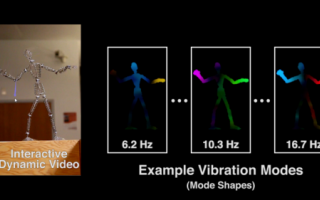
We obviously can’t do that with videos — just try touching that cat video on your phone and see what happens. But is it crazy to think that we could take that video and simulate how the cat moves, without ever interacting with the real one?
Researchers from MIT’s Computer Science and Artificial Intelligence Laboratory (CSAIL) have recently done just that, developing an imaging technique called Interactive Dynamic Video (IDV) that lets you reach in and “touch” objects in videos. Using traditional cameras and algorithms, IDV looks at the tiny, almost invisible vibrations of an object to create video simulations that users can virtually interact with.
"This technique lets us capture the physical behavior of objects, which gives us a way to play with them in virtual space,” says CSAIL PhD student Abe Davis, who will be publishing the work this month for his final dissertation. “By making videos interactive, we can predict how objects will respond to unknown forces and explore new ways to engage with videos.”
Davis says that IDV has many possible uses, from filmmakers producing new kinds of visual effects to architects determining if buildings are structurally sound. For example, he shows that, in contrast to how the popular Pokemon Go app can drop virtual characters into real-world environments, IDV can go a step beyond that by actually enabling virtual objects (including Pokemon) to interact with their environments in specific, realistic ways, like bouncing off the leaves of a nearby bush.
He outlined the technique in a paper he published earlier this year with PhD student Justin G. Chen and professor Fredo Durand.
Article with video link: http://www.csail.mit.edu/reach_in_and_touch_objects_in_videos_with%20_interactive_dynamic_video
How it works
The most common way to simulate objects’ motions is by building a 3-D model. Unfortunately, 3-D modeling is expensive, and can be almost impossible for many objects. While algorithms exist to track motions in video and magnify them, there aren’t ones that can reliably simulate objects in unknown environments. Davis’ work shows that even five seconds of video can have enough information to create realistic simulations.
To simulate the objects, the team analyzed video clips to find “vibration modes” at different frequencies that each represent distinct ways that an object can move. By identifying these modes’ shapes, the researchers can begin to predict how these objects will move in new situations.
“Computer graphics allows us to use 3-D models to build interactive simulations, but the techniques can be complicated,” says Doug James, a professor of computer science at Stanford University who was not involved in the research. “Davis and his colleagues have provided a simple and clever way to extract a useful dynamics model from very tiny vibrations in video, and shown how to use it to animate an...
In the fourth of a seven-year agreement, the partnership between QCRI and MIT CSAIL continues to gain momentum, with scientists on each side of the collaboration co-leading multidisciplinary core computer science research projects. The partnership, named the Computer Science Research Program, is a medium for knowledge transfer and the exchange of expertise, as well as a platform to engage and train young researchers who are helping to build Qatar's research capacity.
The annual research projects meeting will review the partnership's eight main collaborative computing projects: Video Magnification and Video Comparison for Sports, Content-Adaptive Video Retargeting, Cross-Cloud: Phase 2, Understanding and Identifying Cultural Identities Across Platforms, Data Integration, Speech and Language Processing for Arabic, A Vertically-Integrated Approach to Resource-Efficient Shared Computing, and Understanding Health Habits from Social Media Pictures.
Full story: https://www.zawya.com/story/HBKUs_Qatar_Computing_Research_Institute_and...
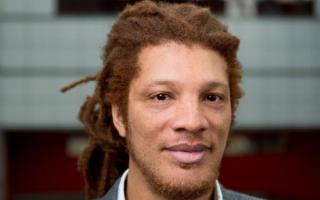
Full story here: http://news.mit.edu/2015/designing-virtual-identities-empowerment-and-so...

Full story here: http://news.mit.edu/2015/software-converts-2-d-3-d-video-1104

Full story here: http://news.mit.edu/2013/building-disaster-relief-phone-apps-0930
Full story here:http://www.csail.mit.edu/node/1817
2017
Reading a Neural Network's Mind, MIT News, December 10, 2017
CSAIL hosts annual meeting highlighting innovative collaboration with Qatar Computing Research Institute, CSAIL Communications, October 9, 2017
Oh, Snap! Scientists Are Turning People's Food Photos Into Recipes, NPR, August 2, 2017
Turn your food pictures into recipes with artificial intelligence, USA Today, July 25, 2017
AI demo picks out recipes from food photos, BBC, July 21, 2017
AI suggests recipe for a dish just by studying a photo of it, New Scientist, July 20, 2017
This AI turns #FoodPorn into recipes you can use, Wired, July 20, 2017
Artificial intelligence suggests recipes based on food photos, MITnews, July 20, 2017.
Using Chip Memory More Efficiently, MITnews, July 7, 2017
Computer vision research aims to identify overweight people from social media face photos, The Stack, March 10, 2017
The hero big data needs? Data Civilizer helps scientists conquer the clutter, Yahoo Tech, January 24, 2017
Taming data, MIT News Office, January 19, 2017
2015
Cloud security reaches silicon, Domain-b.com, April 23, 2015
Cloud security reaches silicon, MIT News Office, April 23, 2015
Qatar computing research institute inspires local youth about relevance of computing, Zawya, April 5, 2015
Agora Dark Web market discovers suspicious activity on servers, pauses operations, CIO Asia, August 27, 2015
Agora Dark Web market discovers suspicious activity on servers, pauses operations, Compuerworld Singapore, August 27, 2015
Agora Dark Web market discovers suspicious activity on servers, pauses operations, MIS Asia, August 27, 2015
Agora Dark Web market discovers suspicious activity on servers, pauses operations, PC Advisor, August 26, 2015
Agora Dark Web market discovers suspicious activity on servers, pauses operations, Computerworld, August 26, 2015
Tor security concerns prompt largest dark market to suspend operations, CIO Asia, August 27, 2015
Tor security concerns prompt largest dark market to suspend operations, MIS Asia, August 27, 2015
Tor security concerns prompt largest dark market to suspend operations, Computer World Singapore, August 27, 2015
Tor security concerns prompt largest dark market to suspend operations, Computerworld, August 27, 2015
Tor security concerns prompt largest dark market to suspend operations, CSO, August 26, 2015
Tor security concerns prompt largest dark market to suspend operations, PC World, August 26, 2015
Tor security concerns prompt largest dark market to suspend operations, Computerworld UK, August 26, 2015
Tor security concerns prompt largest dark market to suspend operations, PC Advisor, August 26, 2015
Tor security concerns prompt largest dark market to suspend operations, IT World, August 26, 2015
Tor security concerns prompt largest dark market to suspend operations, IT New, August 26, 2015
Tor security concerns prompt largest dark market to suspend operations, Reseller, August 26, 2015
Agora Dark Web Marketplace Shuts Down Due to Security Concerns, Softpedia, August 27, 2015
Silk Road Competitor Agora Closes Over Tor Vulnerability, Cyber Security News Wire, August 27, 2015
Silk Road Competitor Agora Closes Over Tor Vulnerability, Slash Gear, August 26, 2015
Tor Security Concerns Prompt Largest Dark Market to Suspend Operations, Cyber Security News Wire, August 27, 2015
The Dark Web’s Biggest Marketplace Is Going on Hiatus, Motherboard, August 26, 2015
Forscher finden Sicherheitslücke in Tor, Online PC, August 12, 2015
Poso Anwnymo Einai Telika To Diktyo Tor, Palo, August 26, 2015
Poso Anwnymo Einai Telika To Diktyo Tor, Nooz, August 8, 2015
MIT cracks Tor anonymity network and recognises hidden servers, SC Magazine, August 6, 2015
Image Processing Algorithm Isolates Micro Movements Inside Macro Full Motion Video, Laser Focus World, August 5, 2015
How Spies Could Unmask Tor Users Without Cracking Encryption, Cyber Security News Wire, August 2015
Tor victime d’analyse d’empreinte, CNIS, July 31, 2015
Tor victime d’analyse d’empreinte, L'Observatoire de la Securite Internet, August 4, 2015
QCRI, MIT researchers identify Tor network vulnerability, Gulf Times, August 4, 2015
Researchers mount successful attacks against popular anonymity network, Imperial Valley News, August 3, 2015
MIT researchers have bad news for users of anonymity browser Tor, Business Insider Indonesia, August 3 2015
MIT researchers have bad news for users of anonymity browser Tor, Business Insider, August 3, 2015
MIT researchers have bad news for users of anonymity browser Tor, Business Insider Singapore, August 3, 2015
MIT researchers have bad news for users of anonymity browser Tor, Business Insider Malaysia, August 3, 2015
MIT researchers have bad news for users of anonymity browser Tor, Bullfax.com, August 3, 2015
MIT researchers have bad news for users of anonymity browser Tor, Yahoo! Fianance, August 3, 2015
Tor Hidden Services Identified With 88 Percent Accuracy In Latest MIT Research, International Business Times, August 3, 2015
Tor Project niet bezorgd over nieuwe aanval op hidden services, Security.nl, August 3, 2015
Le réseau Tor mériterait d'être amélioré, Le Comptoir du Hardware, August 3, 2015
Tor Traffic Can Be Deanonymized, Researchers Claim, Softpedia, August 3, 2015
System automatically converts 2-D video to 3-D, MIT News Office, November 4, 2015
2014
The Nerds have Come to Play, Qatar Today, January 29, 2014
Give Him The Hook: New Data Shows Baseball Managers When to Replace the Starting Pitcher, MIT News Office, February 28, 2014
QCRI Organizes Talk By The Inventor Of The World Wide Web, Qatar Foundation, March 17, 2014
Web inventor to deliver lecture in Qatar, Gulfnews.com, March 18, 2014
World Wide Web inventor Tim Berners-Lee to give lecture in Qatar next week, Zee News, March 18, 2014
Inventor of the World Wide Web to speak in Qatar today, Doha News, March 23, 2014
Tickets sold out for Berners-Lee talk in Qatar, March 17, 2014
Tim Berners-Lee, Creator of the World Wide Web, Set To Give Lecture Next Week In Doha, Ping! Zine, March 18, 2014
Tim Berners-Lee, l’inventeur du Web, à Doha, Qatar Actu, March 23, 2014
Inventor of World Wide Web to deliver Lecture in Qatar, Business Standard, March 18, 2014
WWW inventor Sir Tim to speak on its future, The Peninsula, March 18, 2014
2013
Data Tamer startup from Michael Stonebraker, Still in Stealth Mode, KD Nuggets, June 2013
Qatar-based team develops software that predicts popularity of news stories, Doha News, August 6, 2013
MIT's No-Code App Building Software Could Help During Disaster, Gigaom Research, September 30, 2013
Study: smartphone chips sense earthquakes, could speed up aid response, Wired UK, September 30, 2013
Disaster Relief App Toolkit Relies on Semantic Web Standard, Engineering and Technology Magazine, September 30, 2013
Data Tamer, Journal du Net, 2013
14 Big Data Startups Ficarao Cada Vez Mais Conhecidas, Coworking Offices, 2013
Expert to lecture on sports analytics in Doha, The Peninsula, October 22, 2013
Investing in Sports Analytics Pays, Says Expert, Qatar Tribune, 2013
2012
CSAIL and QCRI Announce New Research Collaboration, MIT News, October 23, 2012
CSAIL & QCRI Announce New Research Collaboration, CSAIL, October 21, 2012
Qatar Gives Science Top Priority As It Announces New Research Strategy, Doha News, October 23, 2012
QCRI and MIT Join Forces, The Foundation, Monthly Magazine of the Qatar Foundation, Issue 48, pp 20-21, December 2012
Annual Meetings
2020
QCRI-CSAIL Annual Meeting
Virtual
March 23-24, 2020
Agenda
2019
QCRI-CSAIL Annual Meeting
MIT Stata Center
October 10-11, 2019
Agenda
QCRI-CSAIL Annual Meeting
Hamad Bin Khalifa Research Complex
March 25-26, 2019
Agenda
2018
QCRI-CSAIL Annual Meeting
MIT Stata Center
October 8-10, 2018
Agenda
QCRI-CSAIL Annual Meeting
Qatar National Convention Centre
March 27-28, 2018
Agenda
2017
QCRI-CSAIL Annual Meeting
MIT Stata Center
October 11-12, 2017
Agenda
QCRI-CSAIL Annual Meeting
Qatar National Convention Centre
March 27-28, 2017
Agenda
2016
QCRI-CSAIL Annual Meeting
MIT Stata Center
October 6-7, 2016
Agenda
QCRI-CSAIL Annual Meeting
Qatar National Convention Centre
March 20-21, 2016
Agenda
2015
QCRI-CSAIL Annual Meeting
Qatar National Convention Centre
March 22-23, 2015
Agenda
2014
QCRI-CSAIL Annual Meeting
Qatar National Convention Centre
March 23-24, 2014
Agenda

